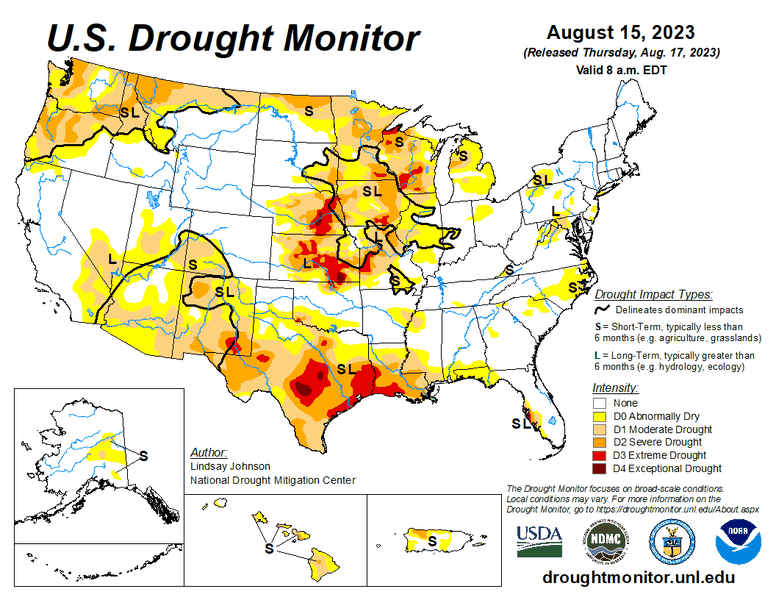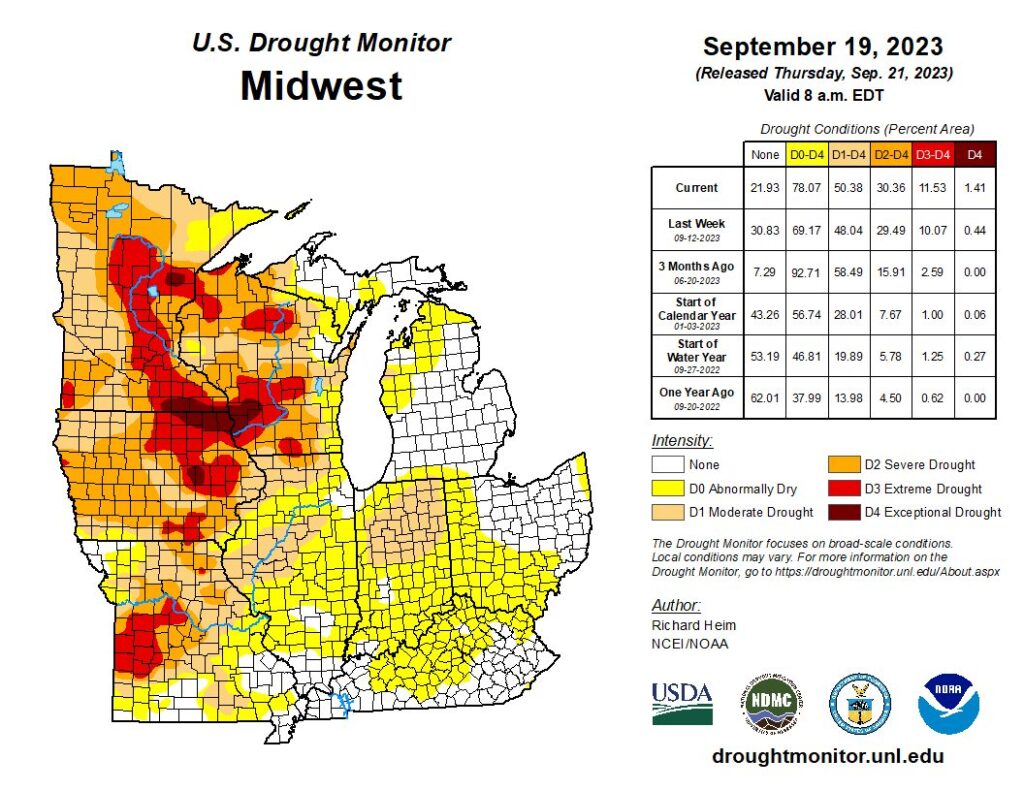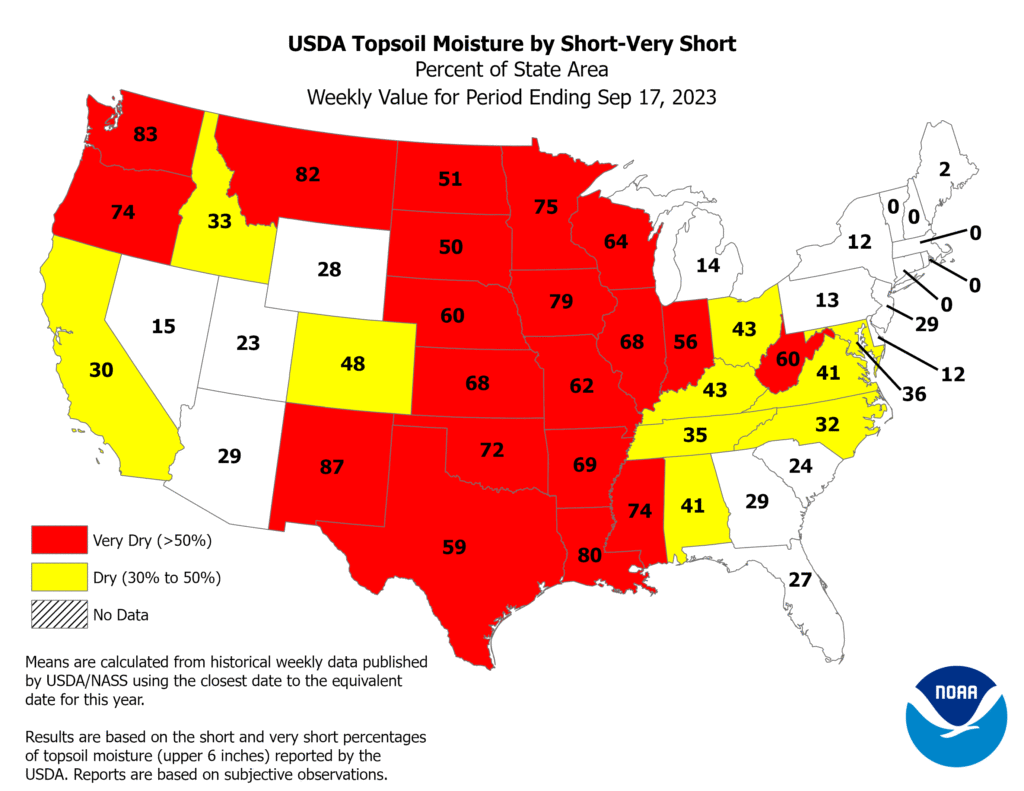- Figure 1. The progression of drought conditions have increased over the last two months in the Midwest. https://droughtmonitor.unl.edu/Maps/Animations.aspx
Many areas around the Midwest continue to creep towards an increasing drought situation (Fig. 1). Currently almost 80% of the Midwest is listed as being abnormally dry to exceptional drought (Fig. 2). Current soil moisture data indicates that most of the Midwest is very dry (Fig. 3). Going into the fall it’s very important to supply enough supplemental water (irrigation) to make up for the deficit prior to the landscape plants going dormant over the next six to eight weeks.
- Figure 2. The current U.S. Drought Monitor indicates much of the Midwest is abnormally dry or in a drought. https://droughtmonitor.unl.edu/CurrentMap/StateDroughtMonitor.aspx?Midwest
The fall is a very important time to limit stressors on landscape plants. A stressed plant doesn’t produce as many secondary metabolites which aide in increased cold hardiness; so keeping your landscape plants irrigated during dry periods in late summer into fall is an important component of preparing plants for winter.
- Figure 3. The current soil moisture status data indicate most of the Midwest is a greater than 50% deficiency in soil moisture. https://droughtmonitor.unl.edu/ConditionsOutlooks/CurrentConditions.aspx
Remember some key steps concerning your landscape during extreme dry periods:
- Don’t wait until leaves begin dropping to start watering.
- Trees should receive the 5+5 rule.
-
- 5 gallons, plus 5 gallons per caliper inch.
- Ideally watering should occur in the early morning to prevent foliar diseases.
- Mulching to 3” can conserve moisture and reduce temperature in the upper root zone.
- Watering during dry conditions will help prevent future insect, disease, and other stress issues going into the fall and the following year. In fact, plants going into the winter that are stressed due to water deficiency will reduce the cold hardiness and therefore will be more likely to suffer cold injury and/or death.
- If a plant isn’t receiving enough water, the amount of nutrient uptake will not be sufficient and will experience deficiency from nutrients the following year.
Resources:
Is it time for drought proof plants in the Midwest?
Drought? Don’t forget the trees
Early Fall Color: A symptom of stress
Why Fall Color is Sometimes a Dud
Feast or Famine: Landscape plants are struggling due to temperature extremes


